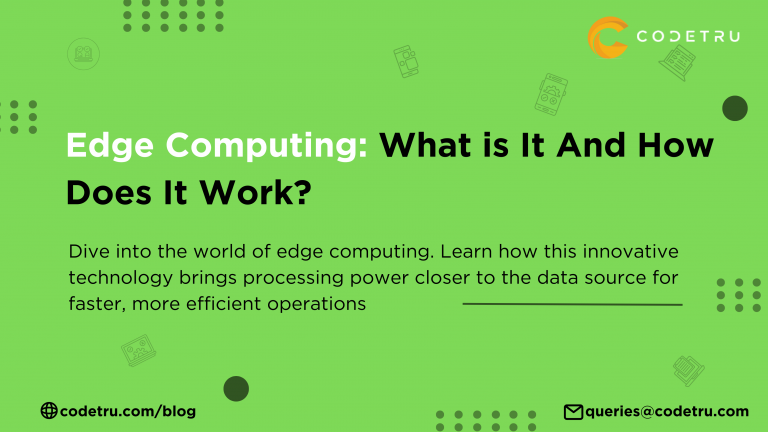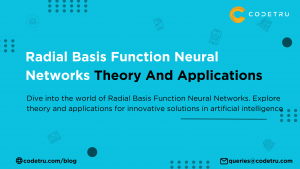Edge Computing
Edge computing is not a “Buzzword” anymore as enterprises make the best use of it during our times. It has transformed how data is being processed, handled, and then distributed to users across the globe. Edge computing systems are further driven by a massive growth in IOT (Internet of Things) and several new applications that require real-time computers. Digital transformation is pushing enterprises towards the edge so to speak when it comes to implementing edge computing within their environment.
What Exactly is Edge Computing?
Edge computing is very well defined by Gartner. Edge computing is defined as being a part of a distributed computer system and the information processed by things or people are towards the edge. Now rather than relying on one centrally located computer system which is miles away, businesses can benefit by the amalgamation of computation and data storage.
In this fast world, latency issues can have a huge impact on the performance of an application. When an organization can tap into real-time data without losing any time, it helps them stay on top of things. Companies can save money when they don’t need to save money on data processing on a cloud based on central location. It was the rapid progress and growth in IoT devices due to which the edge computing was developed. IoT generates an enormous amount of data and so organizations can make the best use
How Does Edge Computing Work?
To understand it clearly, think about the devices that are used in a printing press or a security camera sending in a live feed from a manufacturing unit. If there is one device sending real-time data over the network it is smooth, but if many devices are sending real time data over the same network then that gives way to problems. Now just for thought purposes just think about what will happen if thousands of security cameras are sending over real time data at the same time. It will mean a lack of quality and latency issues, and the money required for bandwidth would also be huge.
For many of these systems edge computing solves the problem by being a local device to store and process the data. For example, the edge gateway becomes a local source of processing and storage for these systems. The gateway works in such a way that it only processes the data received from edge devices and sends relevant data back on the cloud. This helps save a lot of bandwidth during the real-time operations.
Several devices constitute edge computing devices such as the latest smartphones, IoT sensors, notebook computers, internet-connected microwaves, security camera, and so on. These devices and technology have changed the way most industries operated in the past and paved how future devices are connected and used.
Why Does This Computing Matter for Enterprises?
One of the most important reasons why many companies would love to use this architecture is due to the cost saving nature of this computing approach. For most of their applications, the companies that embraced the cloud for many of their applications may have discovered that the amount of money required in bandwidth was much higher than they would’ve expected.
The ability to store and process data faster helps companies to implement and use devices that give real time data for critical operations. So rather than being limited due to technology, edge computing makes it possible for businesses to embrace and use the internet and technology and enhance their operations.
Enterprises Empowered Through Computing
A good opportunity in digital transformation should never be missed especially when it benefits an organization. There’s a lot of new technologies out there and so it is crucial that rather than waiting for it to be urgent, enterprises look at ways in which these will benefit them. Edge computing has several advantages for industries working with real-time data.Enterprises planning to benefit from these types of computing should explore ways and opportunities provided in the tech world. So as an enterprise, organizations must look for ways that are available out there and implement the best solutions.
Codetru: Helping You Compute
At Codetru, we have a great team of experienced and expert professionals working on several exciting tech projects with clients from across the globe. From helping clients implement edge computing to develop state of the art mobile applications, we partner with our client’s digital transformation journey. We leave no stone unturned when providing the most efficient and relevant technology solutions to our clients. If you are looking for any help or suggestions in edge computing, then get in touch with us to know more about how our edge computing and cloud services can help you.
FAQs on Edge Computing
1. What is Edge Computing and why is it important?
Edge computing involves processing data near the source rather than relying on a centralized data center. It is crucial for reducing latency, improving real-time data handling, and enhancing the performance of IoT applications.
2. How does edge computing work in real-time applications?
Edge computing works by processing data locally on edge devices like IoT sensors or gateways, which reduces the need for constant data transfer to the cloud. This improves response times and reduces bandwidth costs.
3. What are the benefits of edge computing for enterprises?
Edge computing offers enterprises cost savings on bandwidth, faster data processing, and the ability to implement real-time data analytics for critical operations, enhancing overall efficiency and performance.
4. Which industries benefit the most from edge computing?
Industries such as manufacturing, healthcare, retail, and smart cities benefit greatly from edge computing due to their need for real-time data processing and low-latency performance.
5. How does edge computing support IoT devices?
Edge computing supports IoT devices by processing and storing data locally, minimizing latency, and ensuring efficient data management. This allows for smoother operation and better integration of IoT systems.







